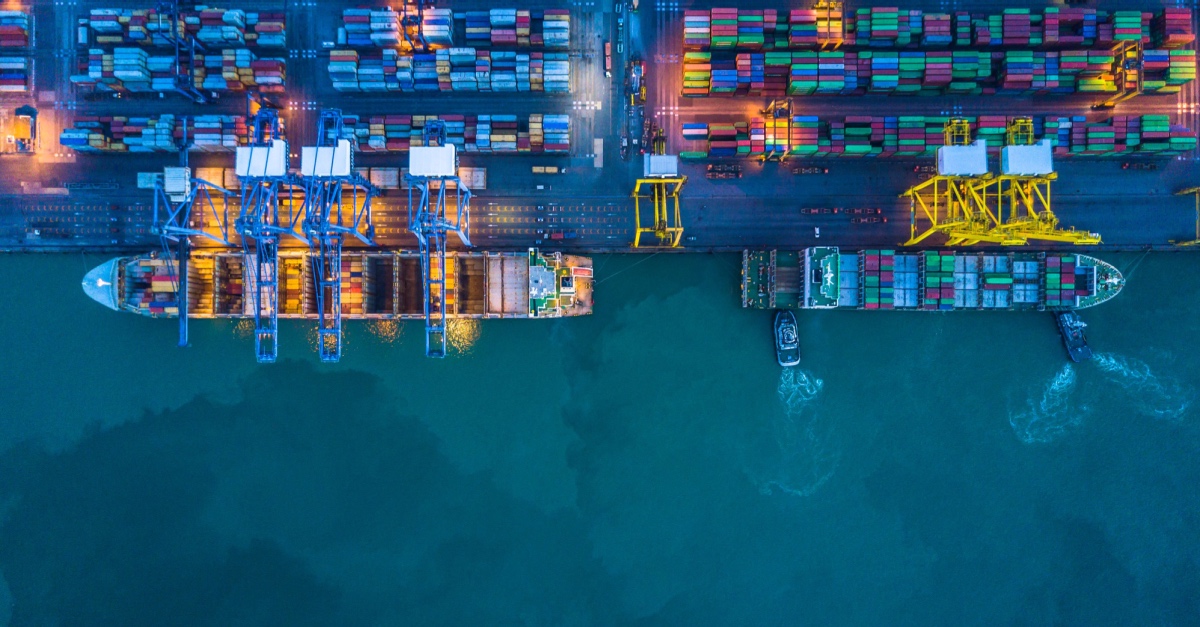Today’s global supply chain is one defined by disruption. Whether from geopolitical crises, climate-related closures at major thoroughfares, or black-swan events, the fully globalized nature of today’s logistics industry can result in catastrophic ripple effects. Perhaps the next largest disruption in today’s supply chain is labor disruption. In this article, we’ll look at a recent disruption and analyze what it may mean for shippers that could be impacted by an ILA strike on the East Coast of the United States in 2024.
Canadian Rail Strike: Significant Ramifications Follow Canadian Rail Strike
In August of 2024, the union representing Canadian National (CN) and Canadian Pacific Kansas City (CPKC) — the two largest rail carriers in Canada — ordered a strike of their rank-and-file members. Members of the Teamsters Canada Rail Conference voted to strike over a number of disagreements with carriers, including proposed contract terms around shift scheduling, shift duration, and shift availability.
The strike was resolved within 24 hours after a contentious ruling by the Canada Industrial Relations Board, but the impact on North American supply chain operations was undeniable:
- Major Canadian ports like Vancouver and Montreal saw notable increases in congestion as workers struggled to accommodate the backlog of freight.
- Manufacturers were forced to adjust production schedules following the labor stoppages, as components failed to arrive on time.
- Overland transportation providers struggled to compensate for the influx of volume at major inland logistics hubs.
Although Teamsters have obeyed the ruling of the Canada Industrial Relations Board (CIRB), union leadership has made clear their intent to continue working toward improved conditions for their rank-and-file. “The right to strike is a constitutional guarantee for Canadian workers. Without it, unions lose critical leverage to negotiate better wages and safer working conditions. Corporate Canada will seize upon this, becoming less inclined to negotiate in good faith, knowing the government can now bust a union on a whim,” a Teamsters communication liaison wrote in a post on their website. “We intend to challenge the CIRB decision all the way to the Supreme Court if necessary.”
While the Canadian rail strike may, for now, be resolved, North American shippers are now preparing for a potential labor disruption with a far more devastating impact on North American transportation operations.
With One Labor Worry Resolved, All Eyes Turn to the East Coast
For the first time in over 40 years, the International Longshoremen’s Association (ILA) is preparing to announce a strike among its 85,000 rank-and-file members over issues such as compensation, scheduling, and automation at ports. As the largest maritime labor union in the United States, an ILA strike would have an undoubtedly catastrophic impact upon supply chains well beyond the areas served by the union.
“This administration will not stand by while employers show disrespect to our hardworking members,” ILA President Dennis A. Daggett said during an address on September 20 in New Jersey. “After October 1, they will never again be able to bench our members for 60 or 90 days over minor infractions. We are done with this system of profits over people. We will not accept automation replacing the men and women who built this industry with their blood, sweat, and sacrifice.”
An Oct. 1 ILA strike would see the temporary shutdown of five of the 10 largest ports in North America, with 43-49% of all U.S. imports then forced to divert to other ports, according to CNBC. For shippers, this means significant delays as shipments are rerouted through the Panama Canal to the West Coast of the U.S. Alternatively, some ports are planning on having vessels slow-steam as a means of delaying arrival until an agreement can be reached between unions and carrier leadership.
While port closures would be limited to the range of the ILA — specifically, the East Coast, Gulf Coast, and Great Lakes regions of the U.S. — many experts predict that the ripple effects of these closures could have a significant impact on North American supply chains as peak season approaches.
“If a strike does occur, that means operations at the covered ports stop. Neither imports nor exports will move, vessels will start to back up outside the ports, containers will sit, and industries from retail to manufacturing to agriculture will be impacted,” Jonathan Gold, Vice President of Supply Chain & Customs Policy at the National Retail Foundation (NRF), said in a recent interview with the American Journal of Transportation. “For retailers, that means holiday shipments might not arrive on time. Manufacturers might not receive parts, materials, and supplies needed for production, which will lead to assembly lines shutting down. And farmers won’t be able to get their products to overseas markets, which could lead to lost sales.”
Despite the catastrophic implications of an ILA strike, a labor stoppage seems to be increasingly likely. Recently, the ILA rank-and-file voted unanimously to authorize a strike. Following this vote, an official representing the Biden administration confirmed that the President would not invoke a ‘cooling-off period,’ as prescribed under the Taft-Hartley act. With union members aligned in their ambition to strike and the federal government loathe to get involved, a complete stoppage of freight along the U.S. East Coast now appears to be all but inevitable.
With Labor Disruptions Brewing, It’s Time to Build Resilience
As shippers prepare for an ILA strike, many are looking for strategies to build resilience. Through a partnership with Gemini Shippers Association, shippers can leverage collective solutions against an increasingly turbulent maritime supply chain landscape.
Diversified Transportation Networks
Gemini Shippers helps members establish and maintain a network of reliable transportation partners, reducing dependency on any single carrier or port. By diversifying the supply chain and having multiple options for routing and logistics, shippers can better adapt to labor disruptions that impact specific routes or facilities.
Advanced Risk Management
With tools and strategies for proactive risk management, including scenario planning and contingency strategies, Gemini ensures that businesses are ready to face unexpected disruptions head-on. These tools help shippers anticipate the fallout of supply chain disruptions and develop plans to mitigate their impact. With proactive risk management through Gemini Shippers, shippers can easily identify alternative supply chain routes and adjust inventory levels to avoid disruptions.
Real-Time Monitoring and Alerts
With Gemini’s advanced digital solutions, shippers gain access to real-time tracking and monitoring of shipments. This visibility enables shippers to quickly identify and respond to disruptions caused by labor issues, adjust plans on the fly, and communicate effectively with partners to minimize delays and maintain supply chain stability.
Gemini Shippers Association: Effective Resilience in a Dynamic Supply Chain
As shippers around the world prepare for the impact of the ILA’s 85,000 rank-and-file going on strike, resilience in the face of major labor disruptions is quickly becoming a vital component of effective supply chain strategies. Through membership in the Gemini Shippers Association, shippers can leverage a diversified transportation network, advanced risk management strategies, and real-time monitoring and alerts to ensure that supply chains remain functional regardless of labor disruptions. Join Gemini today to build resilience in a highly dynamic global supply chain.



